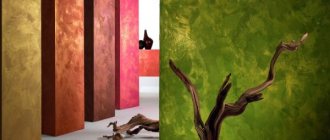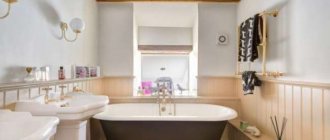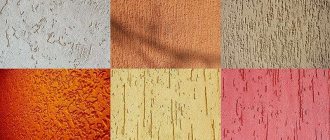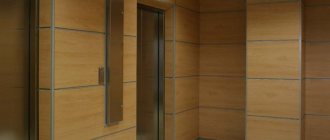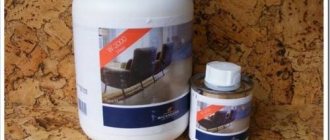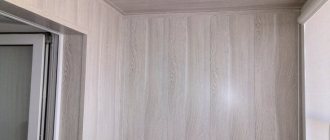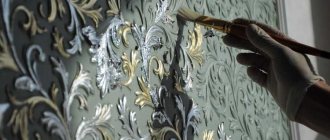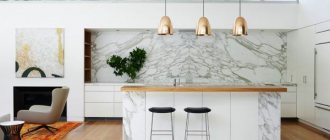Plastic panels are an excellent material that is widely used to add various decor to the surface. Conveniently, this product can be used in almost any room. There is an opportunity to create a truly unique interior. And decorating walls with plastic panels is a fairly simple undertaking that does not require construction experience. Although you still need to know how to do everything most correctly.
What are PVC panels
Plastic panels (lining) have another name - PVC. This is an abbreviated name for the main ingredient of the material - polyvinyl chloride. The production is quite simple and involves passing the molten substance through special molds. This creates a strip that is cooled and cut to the desired size. The result is an excellent finishing material that can withstand almost any temperature (within residential premises).
Wall panels vary in size:
- There are two types of thickness - five and ten (eight) millimeters. The second indicator is combined into one; there are identical additional elements for it.
- The width varies, ranging from twenty to thirty-seven centimeters.
- There are three main sizes in terms of height – 2.6 m; 2.7 m; 3m.
Of course, there are many more sizes. Thus, the width of the plastic lining reaches 120 cm. You can also make any desired non-standard to order.
Advantages and disadvantages
It is impossible to imagine a finishing and building material that would not have its pros and cons.
Modern PVC panels have a beautiful appearance, as well as many other advantages
Wall panels have the following advantages:
- The service life is practically unlimited.
- Excellent moisture resistance. When connected correctly, the seams create a complete seal.
- The material protects the room from extraneous noise.
- Reliability and good resistance to abrasion.
- The cellular structure provides additional thermal insulation. When covering walls with your own hands using lathing, additional space appears for the insulating layer.
- Modern technologies make it possible to create various types of decor. More recently, the choice was quite limited, if not primitive.
- Easy to install. No complex tools required.
- Low price compared to other products.
- Environmentally friendly.
Flaws:
- Inability to withstand constant temperature changes. This does not apply to seasonal phenomena.
- When a fire occurs, plastic elements release corrosive substances.
- Incorrect installation reduces many positive qualities to zero.
Like any other plastic, PVC panels are “afraid” of high temperatures, and when ignited they release harmful substances
On a note! Currently, there are panels that are distinguished by their ability to withstand high temperatures. But they must have special markings.
Technical specifications
Modern plastic products differ from the first releases in increased endurance and long service life. Cracks can only form if there is a significant deviation from operating standards. Plastic facade panels have the following technical characteristics:
- weight 1.5-2 kg/panel;
- the thickness of the products can be 0.7-1.2 mm;
- width 1300 and 1850 mm;
- length 2500-3800 mm;
- permissible tensile strength 100 MPa;
- thermal expansion 0.15%;
- thermal conductivity is 0.3 w/m*k;
- bending strength parameter 140 MPa;
- density 1.4 g/cc.
- resistance to temperature changes depends on the raw material, within -50℃.. +85℃.
There are no Russian regulations regarding the production of vinyl panels. There is an international standard developed by the American organization ASTM (American Society for Testing and Materials). Foreign and domestic companies are guided by these recommended optimal characteristics.
The thickness of panels whose service life exceeds 10 years, according to AST recommendations, should be 0.9-1.2 mm, and their tensile strength should be 422 kg/sq.cm. If plastic panels bear the ASTM mark, this means that the product is of high quality.
Material selection
Naturally, you want to quickly cover the walls with plastic panels, but you need to select them first. And this should be approached with the utmost care. After all, the final result depends on the correct choice. The following rules are taken into account:
- For bathrooms and shower rooms, as well as for all types of wet rooms, panels that are moisture resistant and have no relief are suitable.
- For corridors and balconies (loggias), it is better to choose products that are resistant to mechanical damage.
- Wall decoration with wall panels in living rooms is carried out with PVC coatings, which have different reliefs and patterns. They also imitate natural materials.
Plastic lining has good moisture resistance, so it is often used for finishing bathrooms.
When purchasing, you need to pay attention to the following indicators:
- Appearance of the packaging. It must be intact, without damage. It is important to choose material from the same batch.
- Number of cells. The bigger, the better. You can also navigate by weight. Light products are a sign of deficiency.
- Lock. To do this, check the two selected panels for connection - it must be reliable.
- Price. Products that are too cheap are most likely a fake.
Additionally, we suggest watching a video that explains how to select and attach wall panels.
Why are they more attractive than natural ones?
Gradually, but very quickly, artificial facade panels are replacing stone or wood finishes. And it’s not just the relatively high cost of natural materials. Using PVC panels you can imitate the finish of any type of wood, the cut pattern of any stone.
The color range of artificial building cladding is almost limitless. At the same time, if you do not look closely, the imitation of the natural finish of the building is virtually invisible.
Today, even shades of color that are practically never found in natural conditions are becoming especially popular. For lovers of eccentricity in home decoration, this option is quite suitable.
Calculations
Covering walls with PVC panels requires preliminary calculations. They concern all stages of work. This helps to avoid problems in the future, as well as significantly save money and time.
Frame:
- The location of the profiles is taken into account. It can be vertical or horizontal. This depends on the installation of plastic panels. In any case, they are always perpendicular to the sheathing posts.
- The distance between them is also taken into account, which is 30 - 45 cm. From everything, the required number of frame parts is calculated (+ two profiles at the edges of the wall).
Fasteners:
- The number of dowel nails is taken into account in increments of 35-50 cm.
- There are 20-25 clasps per square meter.
Panels:
- The size of the wall and the selected panel is measured. One indicator is divided by the other, and the required amount is obtained.
- The material in the form of tiles is calculated based on square meters.
Additional elements.
This group includes all other parts and moldings. For calculations, measure the entire perimeter of the room. The number of external and internal corners is taken into account.
Additional elements that may be useful when decorating walls with plastic panels
On a note! All calculations are made with a margin of 10%. Such a reserve is due to the fact that various damage to products or other unforeseen circumstances are possible. Door and window openings are also taken into account.
Step-by-step instruction
Preparatory work
At this stage, the preparatory work boils down to removing the old finish from the walls (if any), filling up potholes, chips, cracks in the walls, minimally plastering the surface and treating the walls with a primer with moisture-repellent properties. It is not necessary to make it “beautiful”, because all the defects of the wall will be hidden behind the panels.
Preparatory work also includes marking the surface of the walls for installing the sheathing frame.
Note: when covering walls with siding panels, it is necessary to lay a vapor and waterproofing layer with insulation.
Installation frame
Here you need to decide on the type of frame - made of wood or metal profiles. Both options are the same in terms of construction; the only difference is cost and durability. So, before making a frame from timber, it is necessary to impregnate all the material with an antiseptic composition - it will protect the tree from harmful insects and fungal infections. Of course, a wooden frame can be cheaper at the initial stage of construction, but it will last less than a metal one.
A frame made of metal profiles, and even galvanized, will cost more - but its service life will be longer. In addition, there is no need for additional processing costs for the structure.
According to the markings, the main slats are first attached to the walls - they will become supporting ones, on which the sheathing itself will then be installed. The sheathing is a honeycomb, in the cells of which insulating material, a hydro- and vapor barrier layer are laid.
Note: Despite the seemingly expensive design, additional layers increase the thermal insulation and sound insulation characteristics of the house.
The frame (wooden or metal) is fastened to the wall with self-tapping screws; the fastening points must be treated with an antiseptic (for a wooden frame) or a primer (for metal profiles). The sheathing pitch is 0.3 - 0.5 m, all ends must be secured to avoid “sagging”. The fastening step is 25–30 cm.
Laying the “layer”
The sheathing frame is arranged in such a way that the panels are attached to the wall with some “air” gap, or layer. This gap is necessary so that the surface of the main wall does not rot, condensation does not accumulate on it, and the under-frame space is ventilated.
In addition, it is necessary to lay thermal insulation (as a rule, these are either sheets of foam plastic, or mineral or glass wool) and a waterproofing layer (so that the wall surface does not “flow” when there is a temperature difference between the inside and outside). You can also lay a vapor barrier film - it additionally prevents the formation of condensation on the surface of the main wall.
After the layer has filled the honeycomb of the frame, you can begin to fix the finishing material.
Installation of panels on lathing
The panels themselves have two edges, on one side there is a shelf that is attached to the frame, on the other there is a “lock” shelf, which is what holds two adjacent panels together.
Important: the covering of the entire wall will depend on how carefully the first panel is fastened; it will become the guide for the entire finish.
Plastic panels are attached to the sheathing and at the same time snapped into place (with a key connection)
The sequence of work when installing the panels is as follows:
- Profiles - starting and finishing - are mounted on the installed sheathing. The first panel is laid into the lower profile, then slightly bent and inserted into the upper profile. After installation, the panel is secured with self-tapping screws. The next panel is installed in the same way, placing the lower part in the lower profile, the upper part in the upper one and fixing the panels along the sheathing.
- The last panel must be cut to the required length on the side of the large shelf. Next, the panel is inserted into a niche prepared for it and closed with a decorative corner.
Note: the installation method described above is for panels with a vertical mounting method. When laying the panels horizontally, all steps are repeated, only the main and guide profiles are attached to the beginning and end of the wall.
In both cases, the panels are deflected across the sheathing
Wall cladding can be secured with self-tapping screws, nails, and even staples or liquid nails. However, experts advise using hidden fastenings with clamps - with their help, the panels are sewn to the sheathing. By the way, if the walls of the house are built of brick, foam concrete or are made of logs, fastening the siding with clamps will be the best way - the fasteners will not damage the material and will become quite reliable.
Advice: if the walls of the house have sufficient thermal insulation, then laying insulating material is not required. Only hydro- and vapor barrier layers can be attached to the frame.
Fastening panels without sheathing
There are cases when installing lathing is impractical, and you have to mount the panels directly on the wall of the house. How to make the cladding in this case, what are the advantages and disadvantages of this finishing method?
Advantages:
- Saving time and money on sheathing - no frame construction required, no hassles with sheathing required. The panels are fixed directly to the wall.
- The method is suitable for wooden frame or panel houses - the walls of such a house themselves are multi-layered, the insulation is already “sewn” into them and no additional thermal insulation is required.
- In addition to plastic panels, the function of which is limited to decoration, the panel walls of such houses can be additionally sheathed with composite sheets. The sheets act as a support, providing strength and rigidity to the walls, so siding sheets can be installed directly on the wall of the house.
Flaws:
- There is no gap between the sheathing and the main wall - an unventilated wall is more quickly susceptible to fungal attack, rot and destruction.
- The frameless method of attaching plastic panels is only suitable for perfectly flat walls.
Installation of panels using the frameless method is somewhat simplified, in contrast to fastening the panels to the sheathing.
Installation is carried out directly on the wall, fastening is frameless
Advice: despite the apparent perfect evenness of the walls, they must be plumb to avoid deviations from the verticals.
After checking the evenness of the walls, you can begin marking them. First, mark the boundary from which the starting cladding strip will begin.
Important! You can begin fixing the siding using the frameless method only after covering the base. In this case, the ebb for the foundation is first installed.
In addition to ebb and flow, frameless installation uses various decorative fittings - with its help you can hide defects and panel joints, and play up the transitions from walls to openings.
Final works
After the panels are secured, an equally important job begins - decorative design of joints, corners, framing of window and door openings. Here you can show your taste. So, to highlight certain areas (for example, windows and doors), you can use decorative strips and corners a tone darker than the color of the main trim. The same applies to the cladding of the foundation (basement): the bottom can be decorated in dark colors, and the frame in light, contrasting colors.
A good solution was the contrast of the foundation with the facade finishing and the framing of the ebbs in a shade darker than the wall cladding
Glue mounting
If the walls are fairly smooth, then work can be carried out without using a frame. Liquid nails are used as fasteners.
When choosing an adhesive, you need to pay attention to its composition. It must not contain solvent. Otherwise, the lining will simply collapse.
Preparation
When decorating walls with PVC panels with your own hands is done using the adhesive option, then the preparation of the walls is approached most carefully. It will not be enough to simply remove excess - you need to completely clean the surface. And in some cases, create a new layer of putty. And be sure to apply an antibacterial primer.
On a note! Currently, there are types of putty that include antifungal substances.
Pasting
The whole process must happen quickly enough, and all movements must be verified. The fact is that it will be almost impossible to correct the shortcomings. That is why this method requires some skills.
Installing plastic panels with glue
So:
- The primer layer should dry well. After all, finishing with plastic cannot be done on a wet wall. Nothing will stick.
- The glue is prepared according to the instructions. When canned formulations are used, they are thoroughly mixed beforehand.
- For work, use a special gun, roller or brush. The area of application of the adhesive composition should not exceed two structural elements.
- The corner element is installed first. The lining is inserted behind it and pressed against the wall. This needs to be done without extra effort, and even more so without precise pressure. It is very easy to damage the cellular structure of the material.
- So, sequentially, they cover the entire area with plastic with their own hands. At the end, the finishing moldings are fixed.
- Now comes the turn of decorative elements.
Wall panels can also be finished using adhesive tape. This method is not yet sealed, so you should not trust it. And the point is precisely in the tape used. Its quality does not always meet the required parameters.
Of course, each master can offer his own variations, which certainly deserve respect. But, when real experience is insignificant or completely absent, then it is better to go along the proven path, even if it takes a little longer. After the first success, it will become extremely clear: how to cover the walls with plastic.
Mounting methods
There are several of them: for staples, liquid nails, screws, clamps.
The type of fastening will depend on the weight of the panel and the presence/absence of sheathing
Liquid nails are used to fasten the panels to a perfectly flat surface; instead, special glue for PVC panels is also used.
| pros | Minuses |
| No need for sheathing | Non-repairability of the panel |
| The cost of work is reduced | Labor-intensive work when removing old coating during repairs |
Using self-tapping screws or staples, you can fasten the panels both to the sheathing and without it - directly to the wall. A screwdriver is required for fixing.
| pros | Minuses |
| Strength and reliability of fastening | The mount is best suited for the frame |
| The frameless fastening method with self-tapping screws is suitable for panel walls with a perfectly flat surface |
Fastening with clamps is similar to fastening with self-tapping screws. The panels are fixed to the frame securely and firmly.
| pros | Minuses |
| Fastening strength | Fastening with clamps should be done to a metal profile, which leads to increased cost of work |
| Durability | |
| Good repairability of the panel even if the material is damaged (quick dismantling, replacement) |

